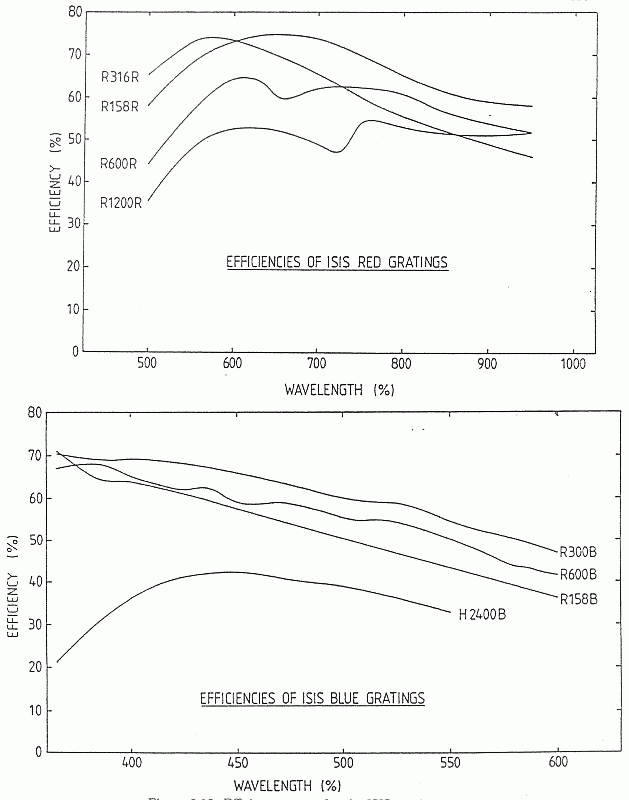 . The holographic grating has a lower
efficiency than the ruled gratings, and
is also used at a grating angle such that the beam overfills the grating,
resulting in some light loss.
. The holographic grating has a lower
efficiency than the ruled gratings, and
is also used at a grating angle such that the beam overfills the grating,
resulting in some light loss.




Nearly all of the light losses within ISIS are due to reflective and air-glass surfaces. There is a small loss of light (<10%) in each camera due to optical vignetting; and for the highest dispersions there is some loss due to overfilling of the grating. The throughput of ISIS has been measured by C.R. Jenkins and P. Terry, and their results are discussed in detail in ING La Palma Technical Note no. 88. Briefly the throughput of the red channel without the grating is measured to be 51%, and that of the blue channel without the grating to be 42%. These measurements were made with a HeNe laser at 6300 Å, and thus for the blue arm are slightly beyond the wavelength range over which it is optimised. The values for the red arm are also slightly low as the red fold mirror in use at the time was below its specification.
The efficiencies of the ISIS gratings have been measured in the laboratory
and are presented in Figure  . The holographic grating has a lower
efficiency than the ruled gratings, and
is also used at a grating angle such that the beam overfills the grating,
resulting in some light loss.
. The holographic grating has a lower
efficiency than the ruled gratings, and
is also used at a grating angle such that the beam overfills the grating,
resulting in some light loss.

[ TIFF ]
Figure: Efficiency curves for the ISIS gratings